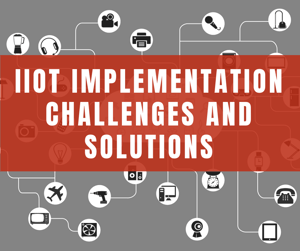-Aug-06-2023-09-06-04-4159-PM.png?width=300&name=ACD%20Template%20(15)-Aug-06-2023-09-06-04-4159-PM.png) The Industrial Internet of Things may be at a path of certainty, with more companies adopting it, however, concerns still remain among major industrial sections regarding its implementation and implications on the workspace.
The Industrial Internet of Things may be at a path of certainty, with more companies adopting it, however, concerns still remain among major industrial sections regarding its implementation and implications on the workspace.
The prime issue that several technology-driven companies face is obtaining support from senior management regarding IoT projects. A strong and motivated executive sponsor is necessary for delivering innovation as it acts as the prime source for all required resources. Therefore, the key to getting IIoT implementation is to have the support – start to finish – of the management or someone who yields similar power. This is just a prelude to what things will become as you inch closer to an IIoT implementation as more peculiar challenges become obvious as you go ahead.
Investment Costs
Significant investment costs are required for a changeover in operations, pertaining to hardware, software, skills, etc. Companies often think of IIoT as one big leap forward that only adds to a huge bill. A better approach to tackling this is to split the projects into bite-sized implementations with predefined milestones. This will give way to result-based progress that can be quantified by top-tier management, resulting in a more enthusiastic response and possibly a larger scale resource limit.
Furthermore, costs can be cut through use of public infrastructure and software-as-a-service instead of expensive tailor-made installations. While IoT costs are decreasing, several companies’ top management are playing the waiting game. This approach may be economically beneficial in the short-term but waiting for the prices to fall for too long may result in loss of competitional edge, giving way to others.
Security
Sending/receiving data to/from the internet is a top concern for an Information Technology department due to the associated risk of malwares, specifically ransomwares. This makes several companies wary of posting their information on the internet. Understanding the working of IoT platforms can help mitigate these risks and give the technical and management functions peace of mind.
IoT security assessments takes into account data from various angles:
Technology Infrastructure
Highly secure networks rely on one-way outbound-only communications. With SCADA being a control network, it must handle control signals going to the equipment. To ensure secure data transmission to the APM:
Communications Infrastructure
The idea of an independent & isolated cellular gateway for IoT instruments is exciting. However, problems arise with reception at remote sites, something that can’t be shrugged off otherwise the purpose of an IoT implementation is defeated.
IoT Standards
Standardization of communication protocols, hardware and software has been a long-running bone of contention in the automation industry, with OPC serving as a unifying point for several platforms. The Open Connectivity Foundation united with the Open Interconnect Consortium in a bid for a unified protocol, with IEEE publishing its P2413 draft that standardizes IoT architecture. While such efforts are commendable, they will still take time as several companies are still waiting to see the results of the long and complex protocols war.
Interested in learning more, connect with an ACD expert!
You may also be interested in reading:


